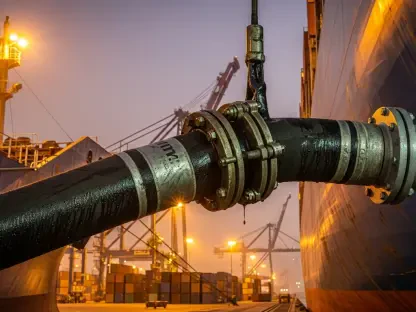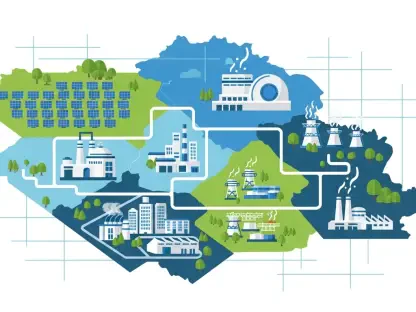The Canadian oil industry is on the brink of a transformative period marked by a concerted effort to expand pipeline infrastructure, aiming to significantly boost oil export capacity. With recently completed projects already tripling pipeline capacity, Canada sets its sights on further initiatives targeting increased delivery volumes. Proposed projects emerge amidst evolving global trade dynamics, asserting Canada’s strategic intention to diversify export avenues. This period of growth, underscored by industry innovation and increasing infrastructure support, enhances Canada’s position as a formidable player in the global oil market while concurrently addressing internal and external economic objectives.
Understanding the Current Landscape
Canada’s oil industry, a cornerstone of the nation’s economy, stands as one of the world’s largest reserves of crude oil. With the completed expansion of the Trans Mountain pipeline, which has tripled its capacity, Canada has laid the groundwork to accommodate anticipated increases in oil sands production. The significance of oil exports cannot be overstated, contributing significantly to national GDP and trade balances, while providing employment across various sectors.
The current infrastructure, though robust, faces mounting pressure to meet future export demands. Key players, including the Trans Mountain pipeline operator, are at the forefront of this expansion, exploring various avenues to enhance capacity. Collaborations with global technology firms and partnerships within the industry play pivotal roles in shaping responses to growing market demands.
Trends Shaping the Future of Oil Exports
Key Industry Trends
A discernible shift towards capacity expansion characterizes the current trajectory of Canada’s oil exports. Emphasis is placed on innovative methods, such as the inclusion of drag-reducing agents, to boost daily delivery volumes by up to 10% on existing pipelines. These technological advancements contribute to both the efficiency and reliability of oil transportation, further solidifying Canada’s competitive edge in the global market.
The influence of global trade dynamics and consumer behavior remains ever-present, impacting both short-term operations and long-term strategic planning. As consumer preferences evolve and demand fluctuates, adaptability and resiliency become paramount for sustained industry growth.
Market Projections and Performance
Recent data highlights notable export volumes, with the potential to increase capacity further by 200,000 to 300,000 barrels per day through new projects. Comprehensive market analyses forecast significant growth in both capacity and demand, driving strategic investments aimed at ensuring future supply availability. These projections, supported by a stable supply of raw materials and technological innovation, reinforce Canada’s standing in the international market.
Demand and supply scenarios anticipate steady growth, with potential disruptions necessitating agile response mechanisms. The continuous evaluation of international markets and economic conditions informs strategic decision-making, ensuring that Canada’s oil industry remains both competitive and sustainable.
Challenges and Strategic Solutions
The pursuit of expanding pipeline capacity is not without challenges. Regulatory constraints, environmental considerations, and market volatility present obstacles that require innovative solutions. Technological hurdles, particularly concerning the integration of new systems with existing infrastructure, demand meticulous attention and strategic planning.
Addressing these complexities, industry leaders advocate for modernized regulatory frameworks and technological enhancements. Innovations in operational efficiencies and pipeline technology, such as advanced monitoring systems and automated controls, provide viable paths forward in mitigating potential operational and environmental risks.
Navigating the Regulatory Environment
Operating within an ever-evolving regulatory landscape, Canada’s pipeline industry must adhere to stringent laws and standards. Significant regulations dictate environmental, safety, and operational protocols, necessitating compliance from all stakeholders. Recent regulatory changes emphasize sustainability and security, aligning with broader commitments to environmental stewardship and public safety.
Industry players continuously engage with regulators to foster compliance while advocating for standards that support growth and innovation. Comprehensive security measures and environmental safeguards serve as foundational principles guiding operational practices, ensuring the industry’s resilience and sustainability.
Forecasting the Industry’s Future
The future of Canada’s pipeline industry promises continued technological advancement and strategic development. Prospects for enhanced pipeline operations are bolstered by emerging technologies, poised to augment both capacity and efficiency. Market disruptors, including geopolitical shifts and economic fluctuations, present challenges that necessitate adaptive and forward-thinking responses.
Consumer preferences and global economic conditions factor heavily into strategic planning, urging the industry towards sustainable and flexible solutions. As traditional markets evolve, embracing opportunities in renewable energy and diversified offerings ensures long-term stability.
Conclusion and Strategic Insights
The analysis of Canada’s pipeline growth plans underscored a strategic drive toward enhancing export capacity, navigating complex markets, and addressing key challenges. Reflecting on these developments, significant progress has been made in aligning infrastructure growth with broader economic objectives, securing a competitive market position, and addressing regulatory and environmental concerns. Stakeholders and potential investors are encouraged to consider the fundamental shifts within the industry, leveraging identified opportunities for sustained growth and resilience in an evolving energy landscape.









